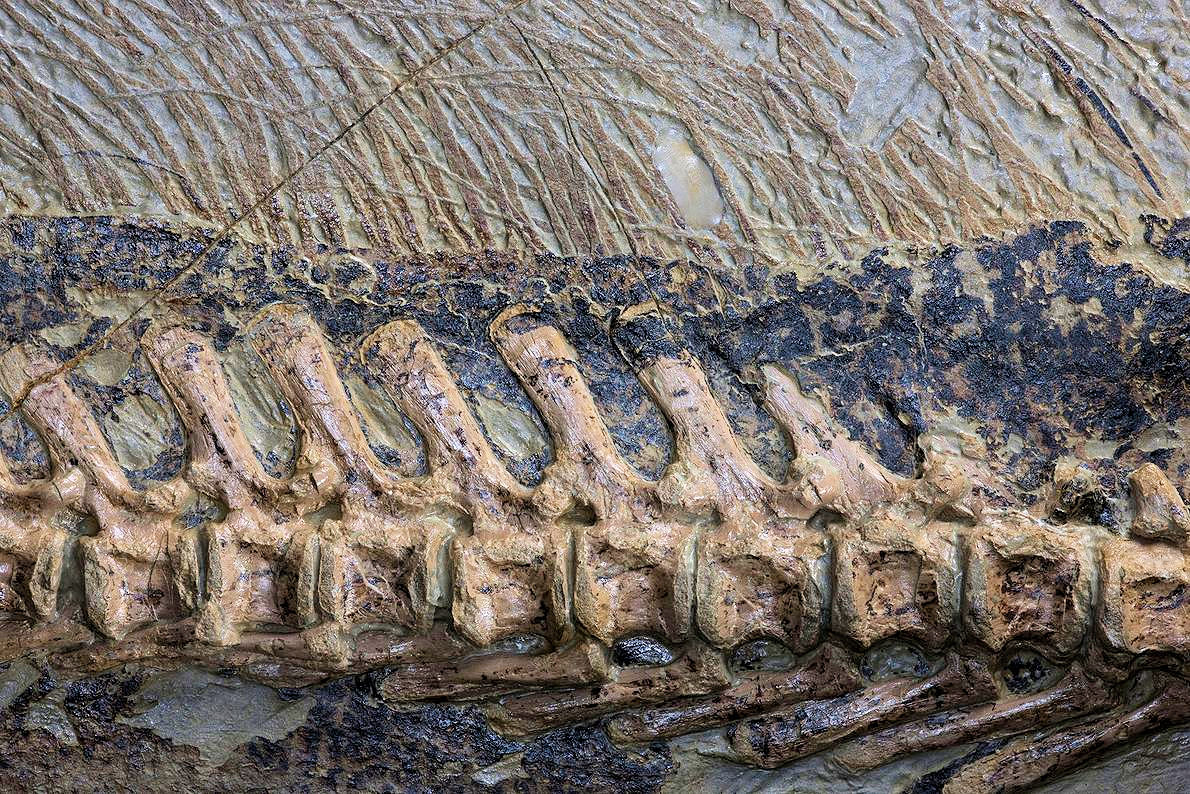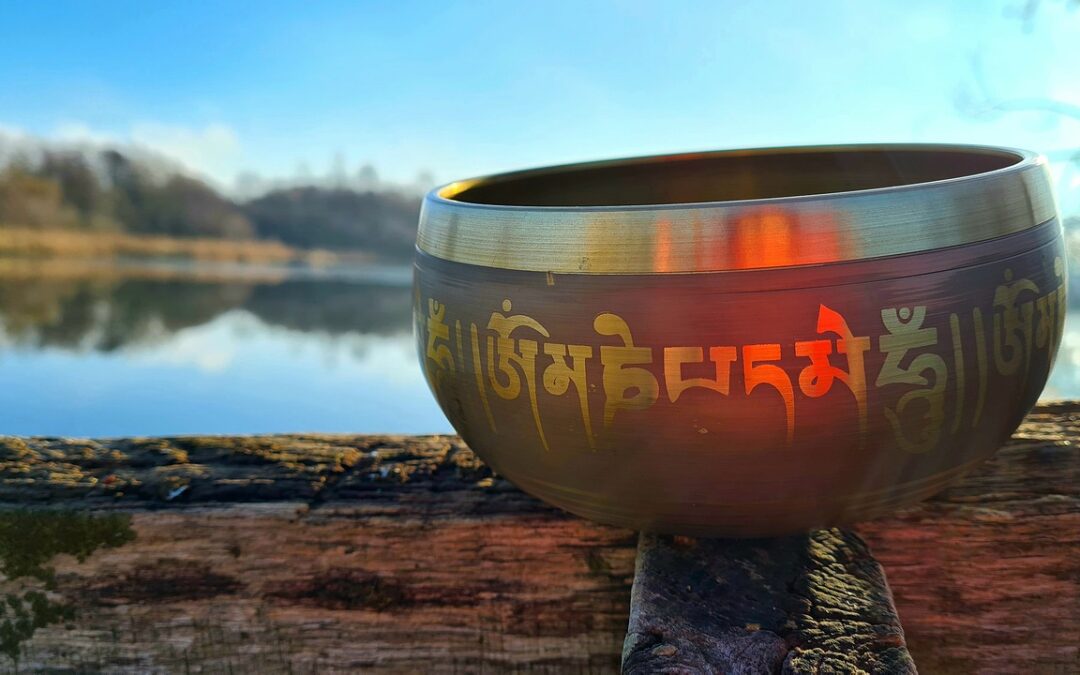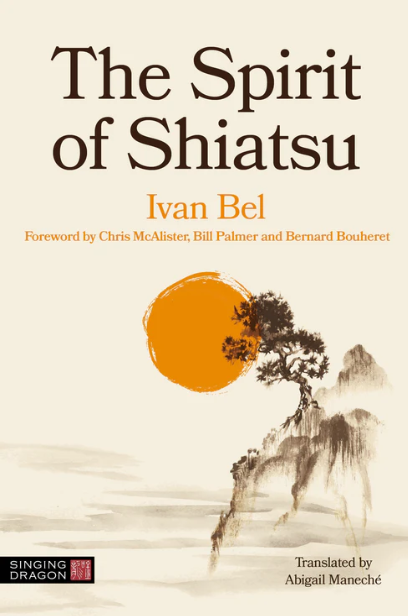Do you know the Hua Tuo Jia Ji points? For a long time, the teachers I met were confusing these points with the first line of the Urinary Bladder. This confusion is often due to a poor knowledge of oriental medicine (Chinese or Japanese), but once this is known, everything becomes clear. However, if these points are easy to use and to locate, their interest is best understood from the anatomical point of view. Take the guided tour!
A doctor ahead of his time
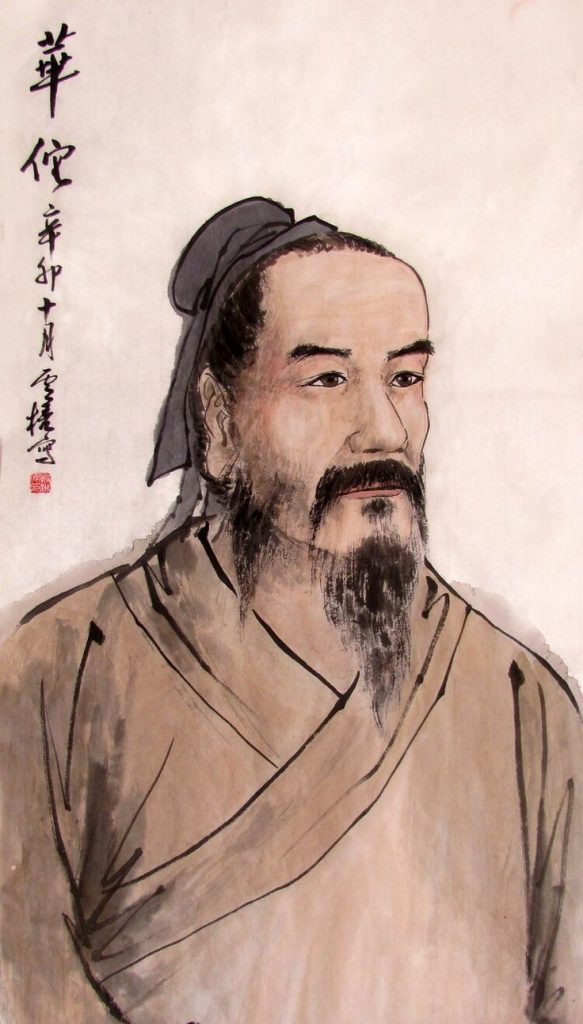
Hua Tuo (華佗) was a doctor who lived in China between 140 and 208 (these dates are not entirely specific and are still under debate within 4 or 5 years) CE, during the Eastern Han dynasty, which makes him a contemporary and elder of the great Zhang ZhongJing (150-219). His existence is known through the Chronicles of the Three Kingdoms (3rd century) and the Book of the Later Han (5th century). He was a native of Qiao County (譙縣), from Pei Commandery (沛郡), which is located in today’s Bozhou, Anhui Province. Later he studied Chinese classics throughout Xu province (covering parts of modern Jiangsu and Shandong provinces) and was intended for high mandarin positions. But he chose medicine over administration. And he was brilliant!
What strikes the mind of researchers in the history of Chinese medicine is the incredible impact he had on his colleagues from the same period. He knew a huge number of plants and his diagnostic and treatment techniques were much more efficient than the usual ones. How to explain such a difference? One possible answer lies in the fact that he practiced in the region where the first Indian Buddhist missions in China were established. It is believed that he studied not only the Chinese medicine of his time, but also Ayurvedic medicine. Moreover, his very name raises questions: Hua Tuo combines the Chinese surname Hua (華, literally “magnificent; China”) with Tuo (佗 literally “hunchback” or 陀 “steep hill”), an uncommon Chinese first name. His name is roughly pronounced ghwa-thā in Old Chinese, a name that could originate from the Sanskrit term agada, which translates to “medicine and toxicology.” And that would make sense, as he was known for using two therapies where he distinguished himself: acupuncture and herbal medicine.
A Taoist by taste, a Confucian by duty, he travelled through the northern and central regions of China and treated a large number of people. Seventeen of his treatments are recorded in the works mentioned above. But he is best known for being the first doctor to use an anesthetic to operate. His recipe now called “mafeisan” (麻沸散) literally means “cannabis, boiled, medicine in powder form,” which was a cannabis-based boiled powder that he infused in wine and gave to drink before performing incisions. What is most remarkable in all this is not so much the brew he invented, but the fact that he performed surgery it, as it was seldom a usual practice at that time. Han Chinese medicine is based on the theory of correspondences. In this concept of Chinese medicine, a doctor seeks to relieve diseases by tracing the chains of correspondences from the sick organ to the source organ where he will restore the functional balance, as we still do today. But he decided to go as swiftly as possible and did not hesitate to cut into the flesh. One can say that he has revolutionized ancient medicine. But this way of proceeding is an additional insight into his knowledge of Ayurveda, where drugs, operations and sutures have long been used (Cf. Jivaka Kumārabhŗta, physician and disciple of Buddha).
Besides this, he drew anatomical charts, developed exercises for the body (of the daoyin type, i.e. the ancestor of qigong). What is striking about him is the uniqueness of his treatments and I recommend you read them in English if you have the opportunity. Just one example: a woman was stung by a scorpion and could not sleep because of the pain. He advises her to put a hand in hot water, and she falls asleep. How did he come to this conclusion? There lies his genius.
Anatomy of the Jia Ji points
While it is not mentioned anywhere in the classical texts that Hua Tuo discovered the Jia Ji points in the back (at least not to my knowledge), we can see that his name is associated with these points. So let’s not be more Taoist than the Tao and let’s grant him the paternity of these points. Why? Because as a surgeon, he probably noticed that between each vertebra there is a nerve outlet and that these nerves are perfectly aligned in the spaces between the lateral apophyses. Therefore, if we press or prick these points, we act directly on the autonomous nervous system.
The characters are always interesting to understand the meaning of their action or use.
夹 (jia): pinch, squeeze from both sides, put in the middle of, entangle
脊 (ji): backbone, spine, vertebra.
Which is the same as saying “press on both sides between the vertebrae”. But nowadays, these points are also being studied from the anatomical point of view and this is where all makes sense. The nervous system that is located there consists for a large part of splanchnic nerves. The Greek name” splankhnon” means “viscera” and is therefore related to the viscera of the abdomen and pelvis. Their action is concomitant with the splanchnic circulation, i.e., the blood of the intestines, in particular to create a blood flow during digestion.
Thus, everything can be explained about the relationship between these points and the nerves, and by extension with the organs. Therefore when we take any horizontal line on the back, we are working on a particular organ. This line includes a point of the Governor Vessel, then a Hua Tuo Jiaji, a point from the first Bladder line, then of the second Bladder line , and there is often an outside meridian point which strengthens the work on an organ.
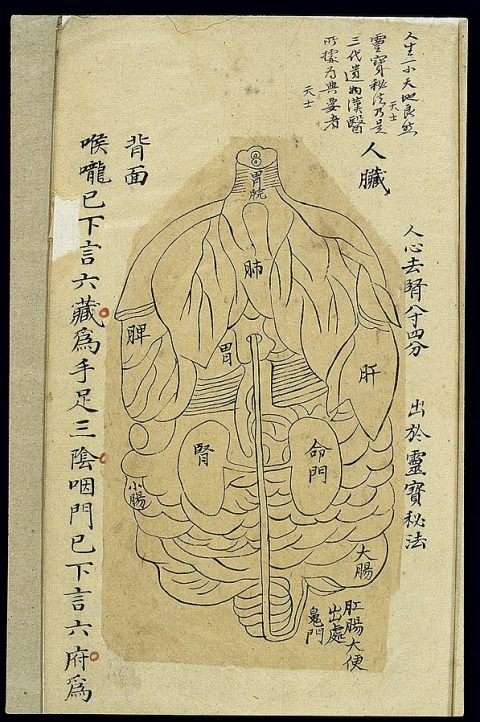
Location
There are 17 Hua Tuo Jiaji points located on both sides, but modern oriental medicine has extended this denomination to all the points located at 0.5 inch from the Governor vessel line (although some sources place them at 1 or even 1.5 inches), from the cervicals to the sacral vertebrae, because they all have an output from the autonomous nervous system which will therefore act on one organ or another. This gives 28 points on either side, 56 in total. But to be quite honest, it is difficult to press correctly on the first 3 at the very top of the cervical spine and generally we use the following 4.
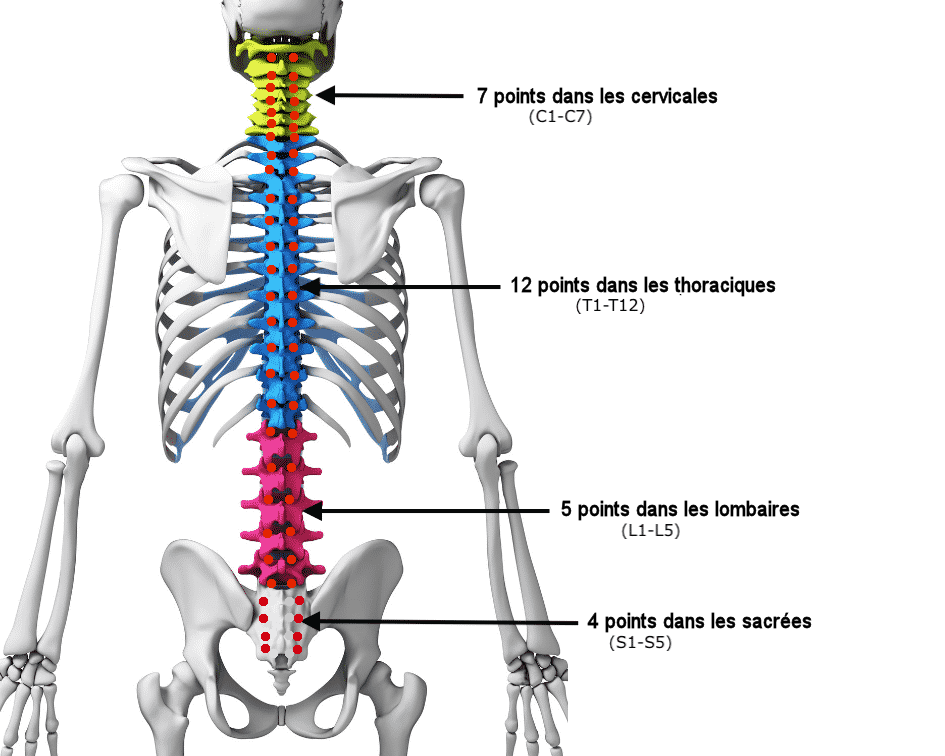
You think you don’t know them? Yet you are practicing them already. In the Namikoshi kata we are treating the ones along the cervical spine. The ones on the sacrum are in fact already on the first line of the Bladder, they are the sacral holes, and everyone uses them when following the Bladder meridian.
This family of points leads us to consider favorably the study of the nervous system in order to have a better understanding of what we are treating. This is what I propose to uncover in a forthcoming article…
Author
- A Milestone: The 2025 ESF Symposium in Brussels - 24 March 2025
- Bosnia – 5-6 April 25: 1st Balkan Shiatsu Summit in Sarajevo - 31 January 2025
- Austria – 19-21 Sept. 25: Shiatsu Summit in Vienna – chronic fatigue, burnout & depression - 19 December 2024
- Terésa Hadland interview: Shiatsu at core - 25 November 2024
- Book review: “Another self” by Cindy Engel - 30 September 2024
- Austria – 24-26 Oct. 25: Master Class in Vienna – Shiatsu and martial arts - 20 August 2024
